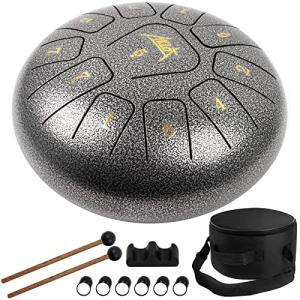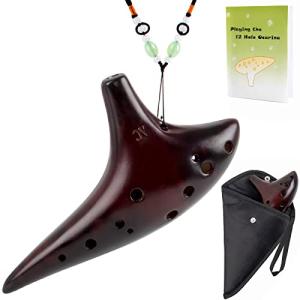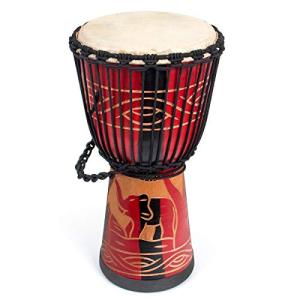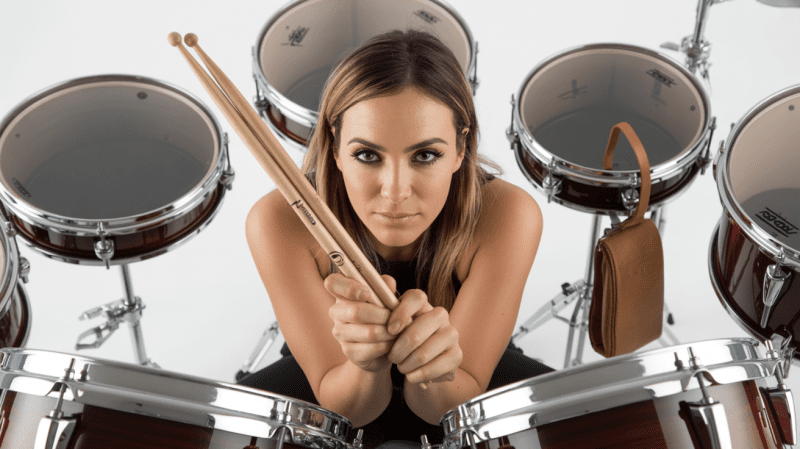Playing drums with a folk band requires a blend of skill, adaptability, and understanding of the genre.
Folk music is unique, with rhythms and sounds that differ from rock or pop. It's crucial to choose drums that produce a warm, rich tone like the Djembe or the Bodhrán to fit the mood and atmosphere of folk music.

Beyond selecting the right drum, embracing the role of a drummer in a folk band is essential. In folk music, drums often serve to support and enhance the melody, rather than dominate it.
Learning basic folk rhythms and beats will help in keeping time and adding depth to the music without overshadowing other instruments.
Techniques and patterns specific to folk can make a significant difference in performance.
Practicing regularly with different folk genres can improve one's adaptability and collaboration skills within the band.
Integrating with the bass and other instruments smoothly can create a cohesive and beautiful sound.
Key Takeaways
- Select warm-toned drums suitable for folk music.
- Learn and practice basic folk rhythms and beats.
- Collaborate effectively with other band members.
Understanding the Role of Drums in Folk Music
Drums in folk music serve as the heartbeat that sets the rhythm and enhances the overall mood. Different cultures have influenced folk rhythms, leading to a diverse array of drumming styles in traditional music.
Historical Context of Percussion in Folk
In many traditional cultures, drums have played a pivotal role. For example, in Irish folk music, the Bodhrán—a handheld frame drum—has been central.
Its deep, resonant tones create a rhythmic foundation that complements other instruments like fiddles and flutes.
Similarly, American folk music often uses simple percussion like spoons and washboards. These instruments were easy to make and played a supportive role in old-time and bluegrass bands.
In African cultures, drums are integral to storytelling and ceremonies, influencing rhythmic patterns in many folk genres.
Historically, folk music's simplicity often meant fewer instruments, making drums a key player. Whether accompanying dance or song, drums provided the beat that held everything together.
Influence of Different Cultures on Folk Rhythms
Different cultures have shaped the rhythms and sounds in folk music.
In Indian folk music, the Tabla and Dholak drums create complex rhythms that drive traditional dance and celebrations. These drums have influenced modern folk bands aiming for authentic sounds.
African rhythms have contributed significantly to global folk music. The use of Djembe drums, with their rich, tactile sounds, adds layers of complexity.
These sounds have been integrated into various folk traditions, including American and English folk music.
English folk music often includes percussion instruments like the tambourine and hand claps. These elements offer a lively, communal feel to the music.
Folk musicians today blend these diverse influences to create unique rhythmic patterns that resonate with different audiences.
Essential Drum Kit Components for Folk

Playing drums in a folk band means choosing the right components to blend seamlessly with traditional acoustic instruments.
Key elements include the snare drum for beats, the bass drum for foundational rhythm, cymbals for texture, and accessories to enhance the folk sound.
Snare Drum: The Heartbeat
The snare drum sits at the core of any drum kit, providing a crisp and clear beat. In folk music, the snare's light, sharp sound helps keep time without overwhelming other instruments.
The snare wires underneath are crucial as they give the drum its distinctive rattle.
Drummers often use brushes instead of sticks for a softer, subtler sound suitable for folk arrangements.
A snare drum placed right in front allows easy reach for rhythmic accents and variations.
Bass Drum: Providing the Foundation
The bass drum delivers the low-end thump that underpins the rhythm in a folk band.
Typically, it is played with a foot pedal, allowing the drummer to maintain a steady rhythm while using hands for other parts.
Smaller bass drums can be more portable for gigs and fit better with the gentler volume of folk music.
Elements like the footboard, direct drive, cam, beater, and a spring make up the kick drum pedal essential for playing.
Cymbals: Adding Colour to the Rhythm
Cymbals, including ride cymbals and hi-hats, add brightness and texture to the music.
A good set of cymbals can vary in size and thickness, leading to different sounds and effects.
For folk music, lighter cymbals are often used to prevent overpowering the acoustic instruments.
They can be struck or brushed for varied dynamics, enhancing the overall sound. Cymbals provide the shimmer and highlights, contributing to the music's lively feel.
Accessories: Enhancing the Folk Beat
Accessories like tambourines and bodhráns are popular in folk music. These small percussion instruments can be integrated with the drum kit to add unique textures.
Tambourines might be attached to the hi-hat stand or played by hand.
The bodhrán, a traditional Irish drum, offers a deep, resonant sound.
Using accessories, drummers can add diversity and maintain the authenticity of folk rhythms.
Choosing the right components and understanding their roles can make a significant difference in the quality and authenticity of the music produced.
The right drum kit setup blends seamlessly with other instruments, enhancing the performance.
Developing the Right Technique

Proper technique is fundamental to playing drums in a folk band. Focus on grip and stick control, dynamics and expression, and coordination and independence to become a skilled drummer.
Grip and Stick Control
Using the correct grip is essential for control and reducing fatigue.
The two main types of grip are matched grip and traditional grip. Matched grip involves holding both drumsticks the same way and is great for beginners.
Meanwhile, traditional grip is often used in jazz but can add unique flavor to folk drumming.
Practice basic rudiments such as single strokes, double strokes, and paradiddles. These exercises help build muscle memory and improve overall stick control.
Use a metronome to keep time accurately and steadily increase speed over time.
Dynamics and Expression
Dynamics refer to the volume and intensity of your drumming. Folk music often requires a softer touch, so mastering softer dynamics is key.
Learning to play dynamically helps the drummer convey emotion and add texture to the music.
Use ghost notes and varying stick heights to control the intensity of your hits.
Practicing with a range of dynamics in different drum exercises will help you develop the ability to play expressively.
This makes the overall sound more engaging and expressive without overwhelming the other instruments.
Coordination and Independence
Folk drumming necessitates excellent coordination and the ability to play different rhythms simultaneously.
Begin with simple coordination exercises that focus on the bass drum, snare, and hi-hat.
Gradually increase complexity by adding more limbs or playing polyrhythms.
Focusing on each limb independently while maintaining the overall rhythm enriches the music.
This skill allows the drummer to add fills and variations without losing the basic groove.
Regular practice with a metronome ensures that these elements stay in sync.
Learning Basic Folk Rhythms and Beats
Playing drums in a folk band requires understanding specific rhythms and beats that define the genre. The following sections will provide essential techniques such as the basic folk beat, incorporating rolls and fills, and keeping time.
The Basic Folk Beat and Variations
The basic folk beat consists of simple, repetitive patterns often played in 4/4 time. Traditional folk music relies on a steady rhythm to support other instruments.
For a basic beat, start with the bass drum on beats 1 and 3 and the snare on beats 2 and 4. Hi-hats are usually played on every quarter note or eighth note.
Variations can include adding an extra bass drum hit on the "and" of 2 or 4. This slight change can create a more dynamic feel in your playing.
Listening to folk music and practicing with a metronome set to the typical folk bpm (around 90-120) will help solidify these patterns.
Incorporating Rolls and Fills
Drum rolls and fills add texture and transitions between sections of a song. Rolls form a continuous series of notes, often on the snare, while fills can include toms, cymbals, and other drums to create variation.
Start by mastering basic rolls, such as single-stroke and double-stroke rolls.
Practicing these at different speeds will improve control and timing.
For fills, begin with simple patterns that fit within the song's structure. A common fill might involve playing eighth notes on the snare and then moving around the toms.
Always play fills in a way that complements the music without overshadowing other instruments. This is crucial for maintaining the pocket and overall groove.
Timekeeping and Keeping It Simple
Keeping time is vital in a folk band. Drummers are the main timekeepers, ensuring the band stays in sync. A steady tempo and clear rhythm are essential.
Use a metronome during practice to develop a strong sense of timing.
Start with slow tempos and gradually increase the bpm as you become more comfortable.
Keeping it simple means resisting the urge to play overly complex patterns.
Focus on maintaining a steady beat and letting the music breathe.
In folk music, less can be more. Stick to the basic rhythms and emphasize consistency over complexity, ensuring the music flows naturally.
Exploring Different Folk Genres
The Pulse of Irish Folk Music
Irish folk music is known for its lively and rhythmic feel. It often features traditional instruments like the bodhrán (a type of frame drum), tin whistle, and fiddle.
The music is characterized by its use of jigs, reels, and hornpipes. These are types of dances with fast tempos.
Rhythms are usually in 6/8 or 4/4 time signatures, creating a distinctive swing. Drummers often use a combination of sticks and brushes to achieve a varied texture.
This genre requires a strong sense of timing. It also requires the ability to play in sync with other instruments, such as the flute and accordion.
American Roots: Bluegrass and Beyond
Bluegrass, a subgenre of American folk music, originated in the Appalachian region. It is known for its quick tempos and complex rhythms. The banjo, mandolin, guitar, and upright bass are key instruments.
Drummers in bluegrass need to follow the fast-paced, syncopated rhythms typical of the genre. Unlike other forms of folk music, bluegrass rarely features a drum set.
Instead, percussion elements come from foot-tapping and percussive playing techniques on string instruments. Bluegrass drummers must adapt to this style, focusing on subtlety and precision.
From Latin Grooves to Eastern European Folk
Latin folk music, such as cumbia and samba, incorporates a wide range of percussion instruments. These include congas, bongos, and maracas.
These rhythms are intricate and often polyrhythmic, requiring a drummer to master complex patterns.
Eastern European folk music is equally diverse. It features instruments like the tambourine and cymbals. Styles from this region include Romanian, Bulgarian, and Hungarian folk.
The rhythms are often in odd time signatures like 7/8 or 5/4, creating a unique and vibrant feel.
Drummers must be versatile and able to switch between different rhythms seamlessly. They should also understand the cultural contexts of the music to play authentically and with sensitivity.
Playing Alongside Other Instruments
When playing drums with a folk band, it’s crucial to blend seamlessly with other instruments. Focus on rhythm, dynamics, and timing to create a cohesive sound.
Accompanying String Instruments
Drumming with string instruments like guitars and fiddles requires paying attention to their rhythm and tempo. The guitar usually sets the pace, and the drummer must keep the beat steady with the bass drum.
Use soft sticks or brushes to avoid overpowering the gentle sound of the strings. Listen for chord changes and accent those moments with cymbal crashes or snare hits.
If a fiddle is involved, follow its melodic lines and match the dynamics. When the fiddle plays louder, the drummer should increase volume slightly.
Synchronizing with Brass and Wind
Brass and wind instruments add a bright, bold sound to folk music. Drummers should listen carefully to the phrasing and breathing of these instruments.
The use of a click track during practice can help maintain timing.
Match the intensity of the brass. For a soft brass passage, use lighter touches on the hi-hat and snare. For louder sections, use stronger bass drum hits.
Syncopation is common with brass, so practice different rhythms to stay aligned with them.
Complementing Vocals and Melodic Lines
Vocals and melodic lines are the heart of many folk songs. The drummer’s role is to support these elements without overwhelming them. Keep the beat simple and steady, focusing on the bass drum to anchor the rhythm.
Listen for vocal cues, like pauses or crescendos, and adjust the drumming accordingly. When the singer emphasizes a word or line, highlight it with a subtle drum accent.
Melodic lines from instruments like fiddles or flutes should be mirrored subtly to keep harmony. Use light cymbals or brushes to complement these parts.
Practical Tips for Effective Practice
To play drums effectively with a folk band, structured practice is essential. Focus on creating a routine that addresses timing, accuracy, and avoiding common pitfalls.
Creating a Focused Practice Routine
A well-structured practice routine is key. Set clear goals and break them down into smaller, achievable tasks.
For instance, spend 10-15 minutes on specific drumming techniques, like different rhythms. This method ensures that each session is productive.
Additionally, separating playing from practice helps focus on improvement. Recording your practice can help identify areas needing work.
Use a calendar to schedule practice sessions. Stick to this schedule to build consistency.
It's also beneficial to write down your routine to track progress. Regularly updating this plan keeps the practice sessions fresh and challenging.
Using Metronomes and Click Tracks
Practicing with a metronome is crucial for timing and rhythm.
Start at a slower tempo to master the beats accurately. Gradually increase the speed as you become comfortable.
This method ensures precision and helps in building speed effectively.
Click tracks are another useful tool. They offer a digital way to keep time and are often used in recording studios.
Practicing with a click track can improve timing and synchronization with other band members. Additionally, these tools help in maintaining a steady tempo, crucial for playing with a folk band.
Avoiding Common Mistakes
One common mistake is neglecting warm-up exercises. Always start with a simple warm-up to prevent injury and prepare your muscles.
Another frequent error is not practicing regularly. Inconsistent practice hinders progress and makes it difficult to maintain or improve skills.
Avoid practicing too quickly. Slowing down helps in mastering complex rhythms and ensures accuracy.
Rushing through practice can lead to sloppy technique.
Finally, resist the temptation to always play along with recordings. Work on improving individual skills before playing with recordings or other musicians.
Performance Considerations
Playing drums in a folk band involves ensuring that your drum setup complements the acoustic nature of the music. Factors such as amplification, drum sizes, and equipment maintenance are crucial.
Amplification and Acoustics
For folk music, amplification should enhance the natural sound of the drums without overpowering other instruments.
Acoustic drums like the Djembe or Bodhrán typically have a warm, rich tone that suits folk styles well.
Placement of microphones is key. Use a condenser mic for a broad pickup or dynamic mics for specific drums like the tom-tom.
Adjusting the tension of the drumheads can also impact the sound. For softer, nuanced playing, consider using brushes instead of traditional drumsticks.
Selecting the Right Drum Sizes
Choosing the correct size for each drum is important in creating the right sound.
Smaller drums like the Bodhrán are more portable and easier to handle, while larger drums can produce deeper tones.
Consider the physical comfort and portability of the drum. A versatile setup could include a mix of small and medium-sized drums.
Ensure that each drum fits within the overall sound palette of the band. Avoid overly large drums which might not suit the acoustic nature of folk music.
Maintaining Your Equipment
Regular maintenance keeps your drums sounding their best.
Frequently check the tension of the drumheads to ensure they produce a consistent tone. Tighten or loosen them as needed.
Keep drum kits clean and inspect for any wear and tear. Change drumheads regularly, especially if they show signs of damage.
Use cases for transportation to protect from physical damage. Additionally, store your drums in a controlled environment to prevent warping or detuning.
Maintaining drumsticks is also essential. Replace them when they become worn out or damaged to ensure a precise and accurate performance.
Health and Safety for Drummers
Health and safety are vital for drummers to maintain longevity in playing. Key areas include protecting hearing, ensuring proper posture, and avoiding injuries by building stamina.
Hearing Protection
Drummers are often exposed to loud sounds that can damage hearing. Using earplugs designed for musicians is essential.
These earplugs can reduce the noise level without distorting the sound quality. This makes them ideal for drummers who need to hear their bandmates clearly.
Setting up the drum kit in a way that minimizes loud reflections, like placing it on a carpet, can help. Electronic drum kits with volume control are another option, especially for practice.
Regular hearing tests are recommended to monitor any hearing loss early.
Ergonomics and Posture
Proper ergonomics and posture prevent strains and injuries while playing.
The drum throne should be adjustable to ensure that the drummer's thighs are parallel to the ground. This position helps maintain a neutral spine, which reduces stress on the back.
Holding drumsticks correctly is also crucial. A relaxed grip and using wrists rather than arms can prevent strain.
Angling the drum kit components so that each piece is easy to reach without over-extending can reduce the risk of muscle fatigue.
Building Stamina and Avoiding Injury
Building stamina gradually is key for preventing injuries.
Beginners should start with short practice sessions of around 10-15 minutes, as suggested by Drum Helper. This time can be increased as endurance builds.
Stretching before and after playing helps keep muscles flexible. Regular breaks during practice sessions prevent overuse injuries.
Exercises like running or swimming can improve cardiovascular health, which is beneficial for stamina.
Joining a Band and Collaborating
When joining a folk band as a drummer, it's crucial to integrate well and communicate effectively with other members. Adding creativity to performances can also elevate the overall sound and make each show unique.
Integrating Into a Folk Band
For a drummer, integrating into a folk band involves understanding the specific style and rhythm typical to folk music.
Folk music often has a simple and repetitive structure, so your drum set should include suitable instruments like a snare drum and a cowbell.
Start by learning the common sticking patterns and rhythms used in folk songs. Focus on creating a light, steady tempo that complements acoustic instruments like guitars and violins.
Adjust your playing style to harmonize with the band’s overall sound.
Practice regularly with your bandmates to ensure smooth transitions between different parts of a song. Consistency and timing are key to building a cohesive performance.
It's important to avoid overpowering the other instruments and to keep your playing subtle and supportive.
Communicating with Band Members
Effective communication with band members is essential for a successful collaboration.
Good communication helps maintain rhythm and ensures everyone is on the same page during performances.
Make a habit of discussing each song's structure and mood with the band before playing.
Eye contact and non-verbal cues can help synchronize beginnings and endings of songs. For example, slight nods or gestures can signal transitions or changes in tempo.
Use verbal communication during rehearsals to give and receive feedback.
Establish a strong rapport, especially with the bass player. A tight connection between the drummer and the bassist forms the backbone of any band’s rhythm section.
Locking in your timing and dynamics with the bass player will provide a reliable foundation for the rest of the band.
Adding Creativity to Performances
Adding creativity to your drumming can make performances memorable. Experiment with different rhythms and solos to keep the audience engaged.
Incorporate varied sticking patterns and percussive elements like a cowbell to enhance the musical texture.
Improvisation is a valuable skill in live performances. While it's important to maintain the core rhythm, don't be afraid to inject your personality into the music.
Create dynamic changes in volume and tempo to add excitement.
During rehearsals, collaborate with your bandmates to develop new arrangements and experiment with different sounds.
Encourage each member to contribute ideas and try out new approaches. This fosters a creative environment where everyone feels involved and invested in the music.
Frequently Asked Questions
Learning to play drums in a folk band involves mastering specific techniques, rhythms, and understanding the unique characteristics of folk music.
The focus should be on blending well with other instruments and choosing the right types of drums.
What techniques are essential for playing drums in a folk setting?
In folk music, drummers often use brushes and soft mallets to create a gentle, warm sound.
Techniques like rim clicks and ghost notes are important for adding subtle nuances without being overpowering. Precision and control are key.
Are there distinct rhythms or beats characteristic to folk music drumming?
Yes, folk music varies widely, but some common rhythms include shuffle beats and waltz patterns.
Understanding traditional dance rhythms, like jigs and reels, is also valuable. These rhythms often have roots in cultural and regional history.
How can a drummer effectively accompany a folk band without overpowering other instruments?
Drummers should focus on dynamics and volume control. Using lighter sticks or brushes can help.
Listening to other band members and playing in the pocket ensures the drums complement rather than dominate. It’s crucial to maintain a good balance.
What types of drums and percussion instruments are commonly used in folk bands?
Typical instruments include the bodhrán, djembe, and cajón.
The bodhrán is popular in Irish folk music, while the djembe is common in various world music styles. The cajón offers a versatile option for adding rhythm without taking up much space.
How does playing drums in a folk band differ from playing in other genres?
Folk drumming is often more subdued compared to genres like rock or metal. It emphasizes supporting the melody and maintaining rhythmic structure. The focus is on enhancing the acoustic sound and blend of the band rather than showcasing the drums.
As a beginner, what should I focus on when learning to play drums for a folk group?
Beginners should start by learning basic folk rhythms and techniques.
Practicing with a metronome can help develop a strong sense of timing.
Listening to a lot of folk music to understand the genre's specific drumming style.
Playing along with recordings can be very beneficial.




